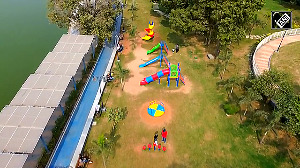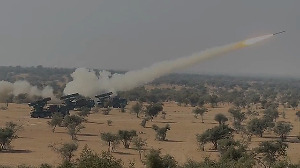The first question is: What do you need a gaming card for? What kind of games you want to play - the 2D or 3D or the even more complex at some point in time?
A majority of the PCs bought in the last couple of years - your PC should, hopefully, fall under this category - come with "onboard" or "integrated" graphics card and an AGP (accelerated graphics port) or PCI Express (PCIe - peripheral component interconnect connector Express) slot.
Now if "Solitaire", "Snakes", "Nibbles" or "Bubbles" is all you want to play, a PC with this configuration should do the job without adding a graphics card.
However, if "Quake", "Half-Life", "King Kong" or "Prince of Persia" - or maybe even the term MMORPG (massively multiplayer online real player games) - are names you're thinking of toying with on your PC or laptop, here are pointers to start with.
First, insert the game CD of your choice, install it and try playing it. Ah! The game is crawling and the picture quality is pathetic. A forest fire in a game appears blurred or the texture of a castle looks like a worn-out carpet. The shades can't be distinguished and the flow of water is jerky. Time to get a new PC to play games? Maybe not.
If the game is agonisingly slow on your machine, then you surely need to upgrade the memory or CPU (central processing unit - the Intel or AMD chip) or simply buy a new one. But if the picture quality is wanting, your current video card may not be able to support the high-end graphics.
You may need a graphics card (a graphics processing unit or GPU) - a second processor in your PC, which makes graphics come alive on the screen. The GPU will also help your machine run faster since the current CPU can do its primary task of multi-tasking - running applications like email, Firefox, Word and Excel simultaneously.
You can opt for a graphics card from either ATI or NVidia. These two players are akin to Intel and AMD in the CPU space. Except that this is a neck-and-neck race. There are other smaller players but hardly heard of - S3 being one of them for budget graphics cards. That pretty much leaves us with these two players, especially in India.
What card to play?
"Integrated graphics" doesn't always mean "low-end". NVidia's NForce system chip set integrates a GeForce2 MX graphics chip and (in many cases) 32 MB of dedicated memory. Athlon-based computers (from AMD) that employ the NForce chip are capable of handling multimedia tasks better than PCs using many other integrated graphics chips.
As for high-end games, anything under Rs 4,000 is always suspect. The brand-new, high-end graphics cards make all your games run fast, but the vast majority of PC users don't have Rs 20,000-25,000 (indicative prices - graphics card prices tend to drop even as we write) to shell out every year.
Budget graphics cards include those based on NVidia's GeForce4 MX chip. To play DirectX 8 games (the latest is DirectX 9 though many games are still to exploit it), you can try out NVidia's GeForce4 Titanium (Ti) and ATI's Radeon 8500 chips. Other manufacturers, such as SIS and Matrox have their own DirectX 8 cards as well.
If you are looking for the ultimate gaming system, all performance 3D video cards should fully support DirectX 9 (it's one of the technologies that helps game developers take advantage of advancing multimedia capabilities and make more realistic games with an immersive, movie-theater-like experience) and have a minimum of 128 MB of graphics memory. 256 MB is better.
The system is more likely to use the new PCI-Express interface, but an AGP slot is still acceptable. The highest-end, fastest, best-performing cards for high-quality imaging, 3D gaming and other demanding applications (if you want to play games with the visual options exploited to their maximum) are generally priced above Rs 20,000.
Don't get blown away
Memory counts. The more complicated the game or image you're viewing, the more video memory you will need. Budget graphics cards typically come with 32 MB to 64 MB of DDR SDRAM, while more-expensive models offer 64 MB to 128 MB. Some cards include extra features, as well as bundled hardware and software.
If you're a casual gamer, NVidia's GeForce4 MX or ATI's Radeon 7500 lines should do the job. You should ideally upgrade to DDR RAM cards (the latest in memory cards).
Faster graphics memory will yield higher frame rates and smoother game play at higher resolutions. New boards (such as cards that are based on NVidia's GeForce4 line) typically come with DDR RAM.
One should generally spend around Rs 10,000 for a decent graphics card that won't force too many compromises in today's games. Cards based on Nvidia's GeForce 7600 GT are good deals. If you're going to spend more than that, you can think of a GeForce 7900 GT-based card.
If you really want to go all out with a 512MB card that will let you run nearly all modern games with AA (anti-aliasing - hardware feature which ensures that the edges of objects do not appear to be jagged) and AF (Anisotropic Filtering - used to address a specific kind of texture artifact that is visible when a 3D surface is sloped relative to the view camera) applied, and future games with all the details souped up (though perhaps not with AA and AF), a Radeon X1900 XT should fit the bill.
In sum, whether you buy a Rs 3,000 graphics card or a Rs 45,000 one will depend on which game you want to play.






 © 2025
© 2025